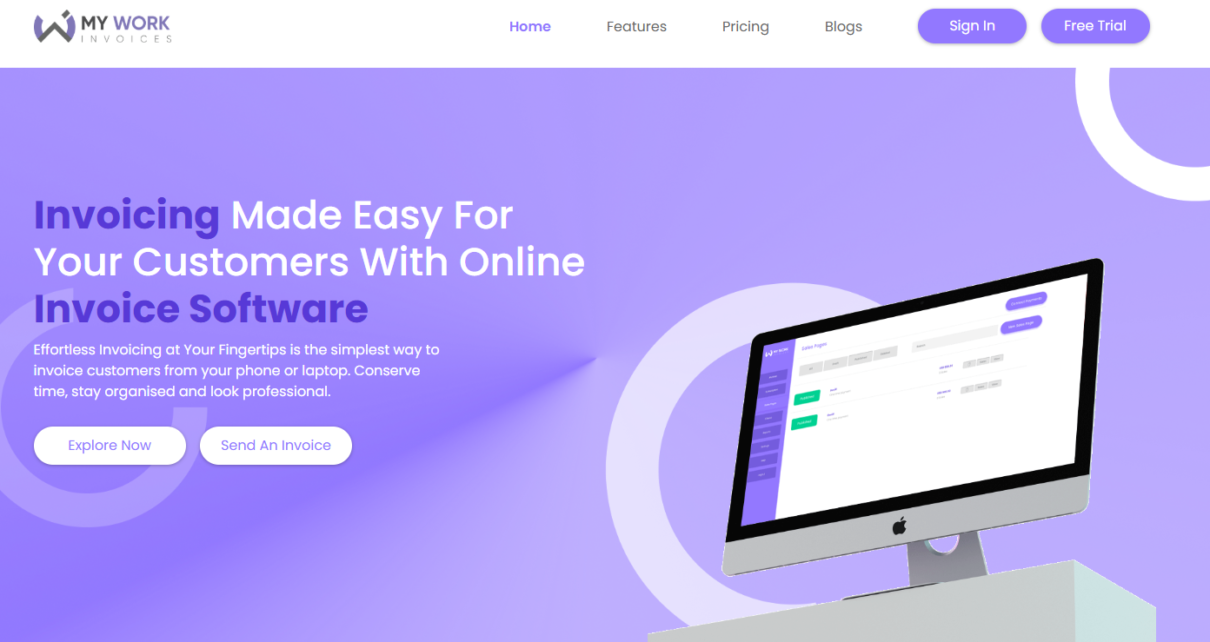Introduction
In today’s fast-moving digital economy, managing invoices and estimates efficiently can make or break your small business. Whether you’re a freelancer, consultant, or small business owner, understanding how to streamline your billing process is essential. With invoice software becoming more accessible and user-friendly, there’s never been a better time to upgrade your workflow.
This guide explores how invoice and estimate software can simplify your processes, save time, and enhance professionalism, while helping you get paid faster.
What Are Invoices and Estimates?
Invoices and estimates are crucial tools for managing business transactions.
An invoice is a document you send to clients after delivering a product or service, requesting payment. It typically includes a breakdown of the work, the total amount due, payment terms, and your business details.
An estimate, on the other hand, is a proposal that outlines the expected costs of a job before it’s started. It helps clients understand pricing, scope, and timelines.
Understanding the difference between these two ensures smoother communication and sets the stage for transparent billing.
Benefits of Using Invoice & Estimate Software
Gone are the days of manual spreadsheets and paper invoices. Here’s how smart invoicing and estimate software improves your workflow:
- Time-Saving Automation: Automatically generate invoices, send payment reminders, and convert estimates into invoices.
- Accurate Record-Keeping: Track client history, payments, and outstanding balances in one place.
- Professional Presentation: Use branded templates with your logo and colors to enhance credibility.
- Mobile Invoicing: Send invoices and estimates from your phone, whether you’re on-site or traveling.
- Multi-Currency & Tax Tools: Handle international clients and taxes seamlessly.
Core Features to Look For in Invoice and Estimate Tools
Not all invoice apps are created equal. Here are must-have features:
- Custom Invoice Templates: Add your logo, brand colors, and custom messages.
- Estimate to Invoice Conversion: Save time by converting approved estimates directly into invoices.
- Payment Tracking: Monitor who has paid and who hasn’t in real-time.
- Recurring Invoices: Automate billing for ongoing services.
- Client Management: Store contact information and invoice history securely.
- Payment Gateway Integration: Accept payments through Stripe, PayPal, or bank transfers.
How to Create Invoices and Estimates (Step-by-Step)
Creating an Estimate:
- Add client details.
- Describe the job, materials, or services.
- Input estimated costs and taxes.
- Send it for approval.
Creating an Invoice:
- Select an existing estimate or start fresh.
- Add the job breakdown, cost, and due date.
- Include terms of payment and notes.
- Send it digitally or download as a PDF.
Common mistakes to avoid:
- Forgetting due dates
- Using unclear service descriptions
- Omitting tax or discount fields
Top Use Cases by Industry
Freelancers: Simplify invoicing with reusable templates and auto-reminders.
Creative Agencies: Manage multiple clients, track project-based billing, and send branded estimates.
E-Commerce Sellers: Use software that supports inventory and sales tax management.
Consultants and Coaches: Benefit from recurring billing and detailed reporting for retainers.
Mobile vs Desktop Invoicing Tools
Many users ask: Should I use a mobile app or desktop tool?
- On-the-go invoicing
- Instant payment notifications
- Capture signatures
Desktop Advantages:
- Advanced reporting
- Easier data entry for bulk invoices
- Better for integrating with accounting tools
The best invoice app solutions offer both, syncing data in real-time.
Essential Integrations to Consider
Choosing an invoicing platform that integrates well can save you hours. Look for tools that connect with:
- Accounting Software: QuickBooks, Xero
- CRMs: HubSpot, Zoho CRM
- Payment Gateways: PayPal, Stripe
- Calendars & Scheduling Tools: Google Calendar, Calendly
Security and Data Privacy
With sensitive financial data at stake, choose invoice software with:
- End-to-end encryption
- GDPR compliance
- Secure cloud backups
- User access controls
Clients trust businesses that take data protection seriously.
Comparison of Popular Tools
| Tool | Best For | Key Features |
| QuickBooks | Small businesses | Accounting integration, time tracking |
| InvoiceSimple | Freelancers | Simple UI, mobile-first |
| MyInvoices Deluxe | Desktop-focused | Custom templates, client management |
Free vs Paid Tools: What Should You Choose?
Free Tools: Good for freelancers just starting out. Limited features.
Paid Tools: Offer scalability, integrations, and professional polish.
Always consider the return on investment. A $15/month tool could save you hours weekly.
Tips for Freelancers and Small Businesses
- Use estimate and invoice templates to stay consistent.
- Set clear payment terms to avoid confusion.
- Follow up with polite reminders if payment is late.
- Regularly review outstanding invoices.
- Sync invoices with your accounting software.
Conclusion
Managing invoices and estimates doesn’t have to be stressful. With the right software, you can streamline your billing, save time, and present your business more professionally. Whether you’re looking for a simple invoice app or a full-featured estimate and billing platform, the tools are available to support your growth.
Take charge of your business finances today,and let your invoices and estimates work for you.




